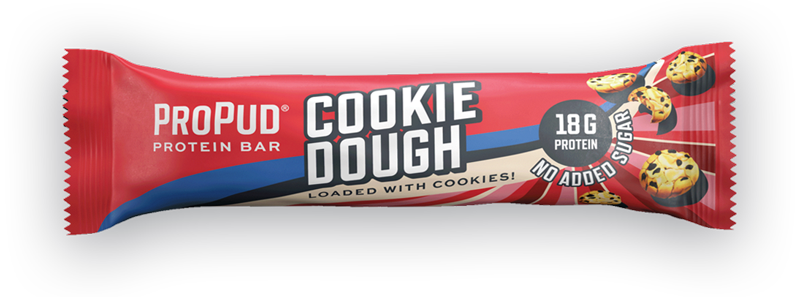
House of Nutrition uses cookies. Do you want to know what this means for your privacy? Then read our privacy and cookie statement.
In the spring, most of them are cutting because they want a . Workouts are often seasonal. In the spring, most people focus on cutting to achieve a summer body. In the winter, it’s the so-called bulking season, where the emphasis is on eating slightly more to gain muscle mass. However, staying in a calorie deficit for too long will not lead to progress. Doing the same thing year-round can also become monotonous, and your body needs occasional changes to be challenged. Bodybuilders often alternate between cutting and bulking phases. In this blog, we will compare these two fitness terms.
CCutting is a term derived from English. During the cutting phase, the goal is to burn fat. You will lower your calorie intake below your maintenance level—not too much, as that would be unsustainable. A calorie deficit of 200 to 500 calories is more than sufficient. Consuming fewer calories may lead to muscle loss or intense cravings, causing you to overeat because you can’t control yourself. During cutting, the aim is to preserve as much muscle mass as possible while burning fat. It is crucial to incorporate enough protein into your diet, roughly 1.4g to 2.2g of protein per kilogram of body weight.
Wondering when to start cutting? Most people begin a cutting program in the spring, allowing enough time to lose weight in a healthy manner before summer. Of course, you can also choose to cut during the winter if you prefer. During the cutting phase, it’s beneficial to add more cardio to your training routine. Spending hours on a treadmill, elliptical, or stationary bike at the gym can get boring, so try incorporating HIIT training (High-Intensity Interval Training) workouts occasionally. HIIT training improves both cardiovascular fitness and strength simultaneously, and the workouts are highly challenging. You can increase the number of reps during exercises to further stimulate your muscles and burn more fat.
Bulking, also derived from English, refers to increasing muscle mass. This is achieved by training frequently and consuming more calories than your body requires. It’s important to incorporate approximately 1.4g to 2.2g of protein per kilogram of body weight into your diet and carefully monitor your calorie intake. Even during bulking, controlled eating is essential, and you should not exceed 200 to 500 calories above your maintenance level. You can’t just eat whatever you want because if you were to fill your day with McDonald’s, you wouldn’t have enough energy as the food lacks nutritional value. A weight gain of 200 to 500 grams per week indicates that you’re on the right track. If you’re not gaining weight, you may need to recalculate your calorie intake and eat a bit more.
While the goal of bulking is to gain muscle mass, it’s inevitable to also gain some fat mass. That’s why after the bulking phase, people typically transition to cutting. Many wonder when to start bulking. Most people choose to bulk in the winter when they can conceal their body under clothing and don’t have to flaunt it on the beach. However, if you’re planning a winter vacation to a sunny destination, you can adjust your bulk phase to a different time of the year.
If you don’t feel like cutting after bulking, you can opt for clean bulking. A “clean bulk” is a term used to describe a method of muscle building where you aim to increase muscle mass with minimal increase in body fat. Instead of creating a significant calorie surplus and eating everything in sight, clean bulking focuses on maintaining a healthy diet and gradually increasing calorie intake to promote muscle growth.
Clean bulking emphasizes consuming nutritious, balanced meals that are rich in proteins, complex carbohydrates, and healthy fats. Proteins are essential for muscle recovery and growth, while carbohydrates provide the energy needed for intense workouts. Healthy fats are important for overall health and can also help with the production of hormones involved in muscle growth.
The goal of clean bulking is to create a moderate calorie surplus, usually around 200-500 extra calories per day above your maintenance level. This ensures that you have enough energy to build muscles while minimizing the increase in body fat.
In addition to a healthy diet, regular strength training is an essential part of clean bulking. By providing the right training stimulus to your muscles, you stimulate muscle growth and optimize the results of your bulking phase.
It is important to note that clean bulking can be a slower process than traditional bulking because weight gain is more limited. However, this can result in a better body composition with less fat accumulation.
Clean bulking requires a great deal of discipline as your nutrition needs to be consistently on point. It can be helpful to follow a bulking plan where you specify the exact amount of calories, proteins, fats, and carbohydrates you should be consuming. Meal prepping can also be beneficial. It takes some time upfront, but it ensures that you always have a healthy meal within reach.
In terms of training during the bulking phase, focus on frequent strength training. Minimize cardio exercises and prioritize lifting weights. In this phase, you can challenge yourself with heavier weights because the calorie surplus provides you with plenty of energy.
Both cutting and bulking require monitoring your progress closely. Seeing results can be motivating and encourage you to continue. The best way to do this is by taking photos or using a tape measure or skinfold caliper to track changes. Weight alone doesn’t tell the whole story. It’s possible to lose a significant amount of weight during cutting, but much of it could be muscle mass. Similarly, during bulking, gaining a few kilograms may seem satisfying, but it could be mostly fat rather than muscle. Look beyond just your weight. Good luck!